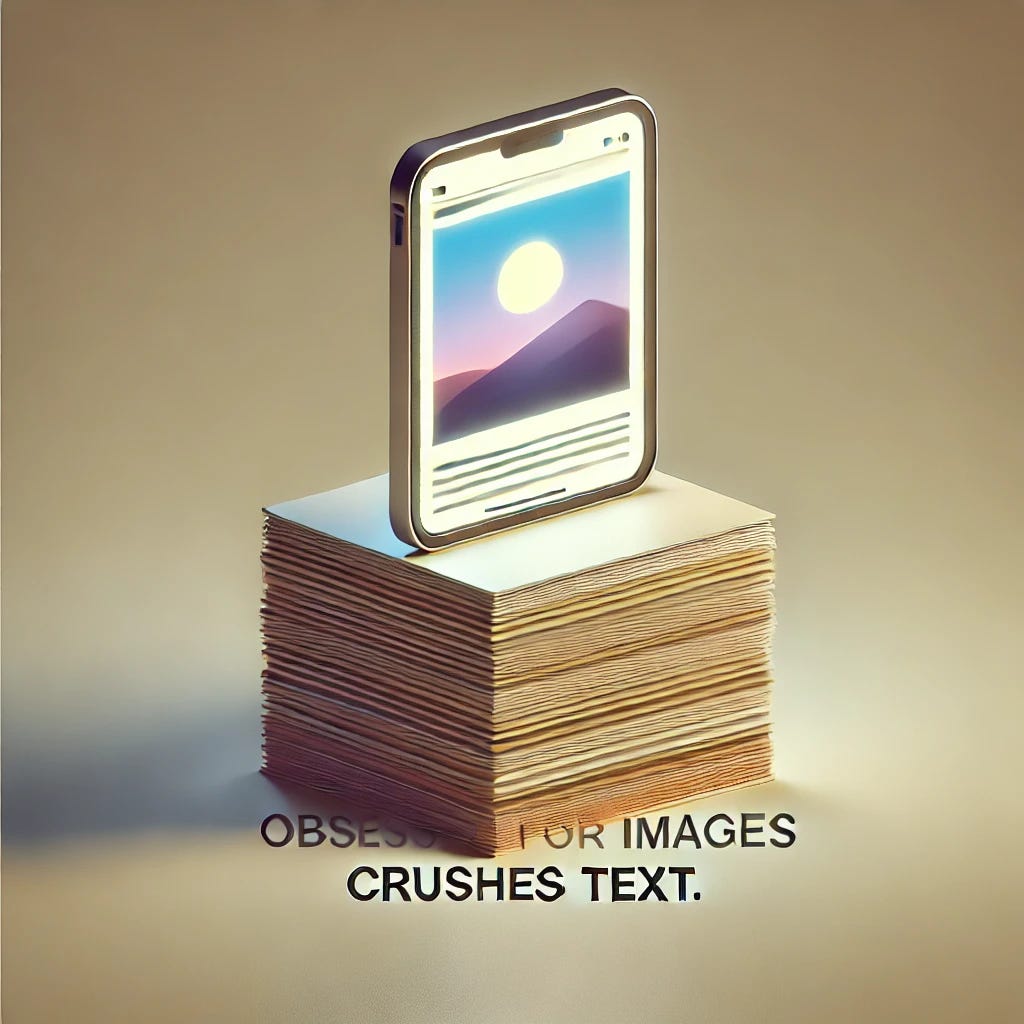The confusing allure of Iconodulism - Chapter 14
Why the obsession of images has crushed the meaning of text. And what we can do about it.
Obsession for images crushes text. As we have seen when studying the multimedia nature of Internet communication, images, whether they are still photos or in a slide show movement, play a very central role on-line. It is to this fascinating iconolatry that we turn our attention right now.
Internet communication gives images (icons) a wider role than other media. Fonts, layout, design are central to usability. But photos, drawings, cartoons are even more important in attracting and keeping the users’ attention.
Most newspapers and magazine like Slate, Wall Street Journal or The New Yorker who’ve attempted to gather readership with long texts have had a hard time in succeeding. Charging for long texts has proved difficult for a wide market, although that trend seems to finally be reverting as people learn to focus for longer periods of time while reading from a screen instead than from a page.
Academic journals are able to rake in some payments, but not in large enough numbers to provide a profitable model in the private sector. But eBooks are selling more and more, on the other hand.
People seem to mostly want to watch, not read, on Internet. And if they read, it has to be fast.
Can long text work on the Internet? If not, why?
Are images more important than words on the Internet? And if it is so, what are the implication on knowledge and on understanding of reality, as we
Keep reading with a 7-day free trial
Subscribe to GlobalSpin with Carlo Pizzati to keep reading this post and get 7 days of free access to the full post archives.





